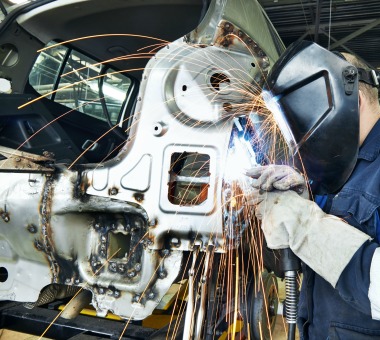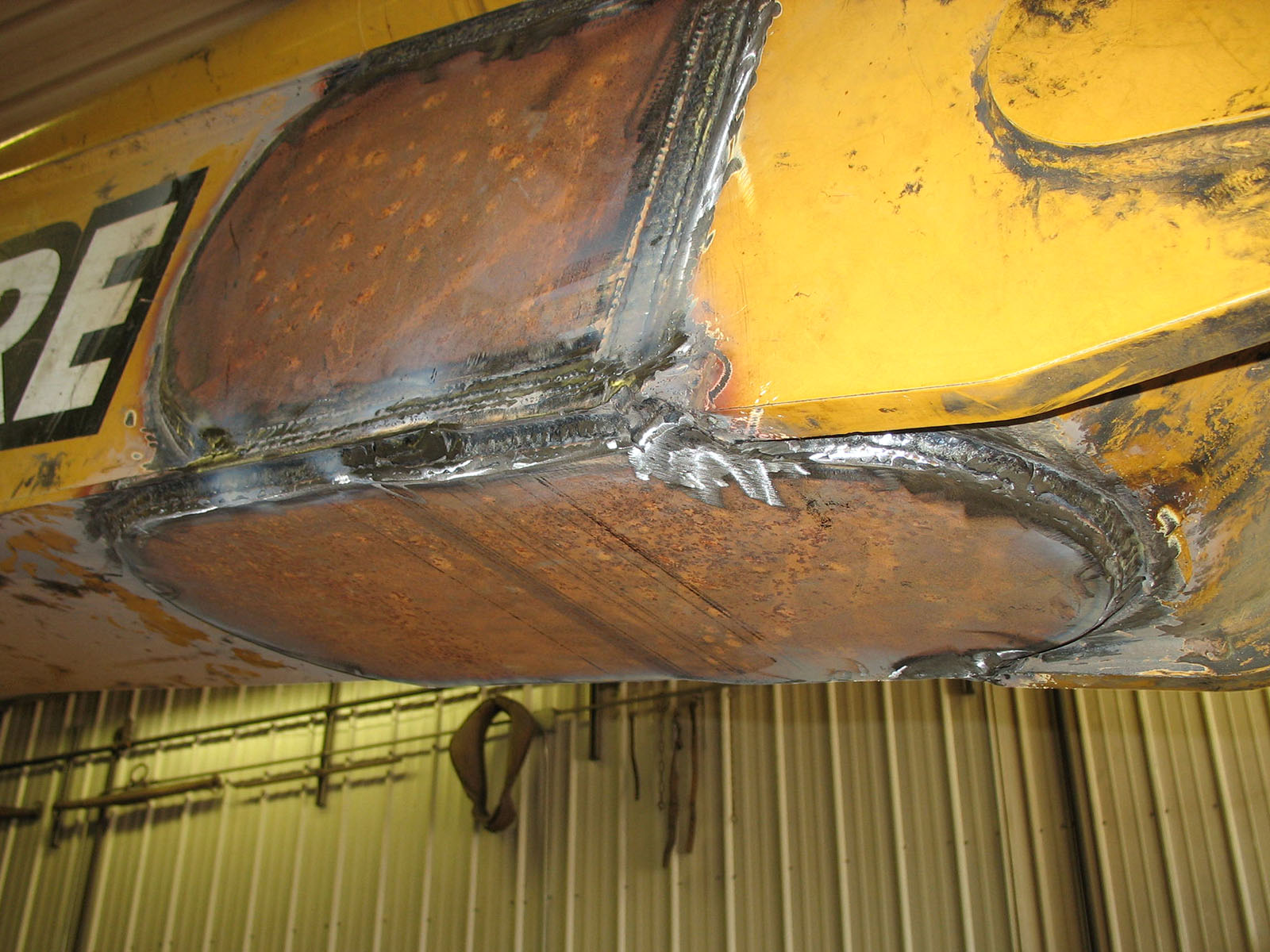Usual Welding Fixing Issues and How to Address Them Properly
Welding repair work usually run into a variety of issues that can jeopardize the honesty of the last item. Usual issues include insufficient penetration, porosity, and misalignment, among others. Each issue presents special obstacles that need specific techniques for resolution. Understanding these issues is essential for welders intending to enhance their abilities and end results. This discussion will certainly discover these usual welding repair work problems and effective methods to address them.
Insufficient Infiltration
Inadequate infiltration happens when the weld steel falls short to completely fuse with the base material, resulting in weak joints and possible architectural failures. This issue frequently comes from insufficient warmth input, wrong electrode angle, or improper welding speed. Welders might encounter insufficient penetration due to a mistake of the required specifications for a particular product thickness or kind. Furthermore, contamination on the base product's surface can hinder effective bonding, worsening the issue. To attend to insufficient penetration, welders should assure proper setups on their equipment and preserve a tidy work surface area. Regular assessment of welds is suggested to recognize any deficiencies early, enabling for timely modifications and the avoidance of jeopardized architectural stability in bonded settings up.
Porosity
Porosity is a common flaw in bonded joints that shows up as little gas bubbles trapped within the weld steel. This defect can compromise the integrity of the weld, causing decreased stamina and potential failure under stress. Montana Mobile Welding and Repair Welding. Porosity commonly emerges from contamination, moisture, or improper welding techniques, which allow gases to run away into the molten weld pool. To resolve porosity, welders ought to assure correct surface prep work, preserve a tidy functioning atmosphere, and use suitable welding parameters. In addition, picking the ideal filler material and protecting gas can minimize gas entrapment. Normal examination and screening of welds can aid recognize porosity early, ensuring prompt restorative activities are taken, thereby maintaining the high quality and dependability of the bonded framework
Imbalance
Misalignment in welding can occur from various factors, consisting of inappropriate setup and thermal development. Comprehending the origin is vital for efficient resolution. A number of correction techniques are available to straighten parts and ensure architectural honesty.
Sources of Misalignment
Welding misalignment typically comes from a range of underlying issues that can endanger architectural honesty. One main cause is improper fit-up of components before welding, which can lead to spaces and unequal surfaces. Variants in thermal expansion throughout the welding procedure can likewise cause distortion, particularly if the products being joined have different coefficients of expansion. Additionally, poor clamping and fixturing might stop working to hold parts safely in position, bring about motion throughout welding. Badly kept tools, consisting of welding equipments and devices, might introduce disparities in the weld bead, further adding to misalignment. Lastly, driver mistake, originating from inadequate training or experience, can additionally play a significant duty in producing misaligned welds.
Correction Strategies Readily Available
Attending to misalignment effectively needs a combination of restorative techniques customized to the details problems handy. One typical method is making use of fixtures or jigs to hold components in the proper placement during welding, making certain consistent alignment. In addition, preheating the products can help in reducing distortion and enhance fit-up. For substantial misalignment, mechanical realignment strategies, such as using hydraulic jacks or clamps, can be utilized to remedy the position prior to welding. Post-weld heat treatment might additionally be needed to soothe stress and anxieties brought on by imbalance. Lastly, careful evaluation and change during the configuration phase can avoid misalignment concerns from ending up being considerable troubles, promoting a smoother welding process and improving total architectural honesty.
Distortion
Distortion is a common challenge in welding that can emerge from numerous variables, including irregular cooling and heating. Understanding the reasons for distortion is essential for applying efficient prevention techniques. Addressing this problem not just boosts structural integrity but likewise enhances the general top quality of the weld.
Reasons for Distortion
When based on the intense warmth of welding, materials usually go through adjustments that can bring about distortion. This phenomenon mostly develops from thermal development and tightening during the welding procedure. As the weld best budget welder area heats up, the material increases; upon air conditioning, it acquires, which can develop inner anxieties. In enhancement, uneven home heating throughout a workpiece can intensify these anxieties, resulting in bending or bending. The sort of material additionally plays a significant duty; steels with differing thermal conductivity and coefficients of development may respond differently, resulting in unforeseeable distortions. Bad joint design and inadequate fixturing can add to misalignment during welding, enhancing the likelihood of distortion. Recognizing these causes is vital for effective welding fixing and prevention strategies.
Prevention Techniques
Reliable avoidance techniques for distortion during welding concentrate on regulating heat input and making sure correct joint design. Keeping a regular heat input aids to lessen thermal expansion and tightening, which can lead to distortion. Making use of techniques such as pre-heating the workpiece can additionally decrease the temperature gradient, promoting uniform heating. Additionally, selecting suitable joint styles, such as T-joints or lap joints, can enhance security and decrease stress and anxiety concentrations. Applying correct fixturing to protect the workpieces in place better help in keeping placement throughout the welding process. Staggered welding sequences can distribute heat extra evenly, protecting against localized distortion. By applying these techniques, welders can significantly reduce the possibility of distortion and improve the total quality of their welds.
Splitting
Fracturing is a typical concern encountered in welding fixings, commonly arising from numerous elements such as improper cooling rates, material selection, or inadequate joint prep work. The event of cracks can considerably endanger the integrity of the weld, resulting in potential failings during operation. To address this issue, welders must initially evaluate the origin creates, making certain that products work and appropriately chosen for the specific application. Furthermore, managing the cooling price during the welding process is necessary; fast cooling can induce tension and lead to fracturing. Proper joint design and preparation additionally add to decreasing the risk. Implementing these approaches can boost weld high quality and durability, eventually lowering the probability of cracking in completed weldments.

Insufficient Combination
A considerable issue in welding repair services is incomplete combination, which happens when the weld steel does not sufficiently bond with the base material or previous weld passes - Montana Mobile Welding and Repair Belgrade. This issue can lead to weak points in the joint, possibly compromising the honesty of the welded framework. Factors site here adding to incomplete fusion consist of not enough warm input, inappropriate welding method, and contamination of the surface areas being signed up with. To resolve this concern successfully, welders must guarantee appropriate pre-weld cleaning and surface prep work, as well as adjust their welding criteria to attain ample infiltration and combination. Regular inspection during the welding process can likewise aid identify incomplete blend early, allowing for prompt rehabilitative actions to boost the total high quality of the weld
Overheating
While welding repair services can improve architectural integrity, overheating presents a substantial challenge that can cause product degradation. Excessive warm throughout welding can modify the mechanical residential or commercial properties of steels, leading to reduced strength, enhanced brittleness, and bending. This sensation is particularly essential in high-stress applications where structural integrity is extremely important. Identifying overheating can involve visual examinations this for discoloration or distortion, along with monitoring temperature level throughout the welding procedure. To minimize the threats related to overheating, welders must utilize ideal methods, such as managing heat input, readjusting traveling speed, and utilizing appropriate filler products. In addition, implementing pre- and post-weld heat treatments can aid restore product residential or commercial properties and enhance the overall top quality of the fixing, making certain long-term performance and security.
Frequently Asked Questions
What Are the Usual Indications of a Welding Flaw?

Exactly How Can I Evaluate My Welds for Top quality?
To examine welds for high quality, one can utilize aesthetic assessments, ultrasonic testing, and radiographic methods. Each technique guarantees architectural integrity, recognizes flaws, and confirms adherence to defined criteria, ultimately improving the reliability of the welded joints.
What Safety Preventative Measures Should I Take While Welding?
When welding, one need to prioritize safety and security by using ideal personal safety tools, ensuring correct air flow, securing combustible products away, preserving a tidy office, and understanding environments to stop accidents and injuries.
Can I Fix a Weld Without Renovating the Entire Joint?
Repairing a weld without redesigning the entire joint is feasible, relying on the damages (Montana Mobile Welding and Repair Fabrication). Strategies such as grinding, including filler product, or making use of a welding process can effectively address details problems while maintaining the surrounding structure
What Devices Are Crucial for Effective Welding Fixes?
Essential tools for reliable welding repair work include a welding equipment, wire brush, mill, safety equipment, clamps, and filler products. Each device plays an essential duty in guaranteeing top quality and safety throughout the repair work process. Porosity generally occurs from contamination, dampness, or incorrect welding strategies, which permit gases to escape right into the liquified weld pool. Inadequately conserved tools, consisting of welding machines and devices, may introduce inconsistencies in the weld bead, further contributing to imbalance. When subjected to the extreme heat of welding, products often undergo changes that can lead to distortion. Cracking is an usual issue encountered in welding fixings, commonly resulting from different aspects such as inappropriate cooling rates, material choice, or inadequate joint preparation. A significant problem in welding repair services is insufficient blend, which happens when the weld steel does not sufficiently bond with the base material or previous weld passes.